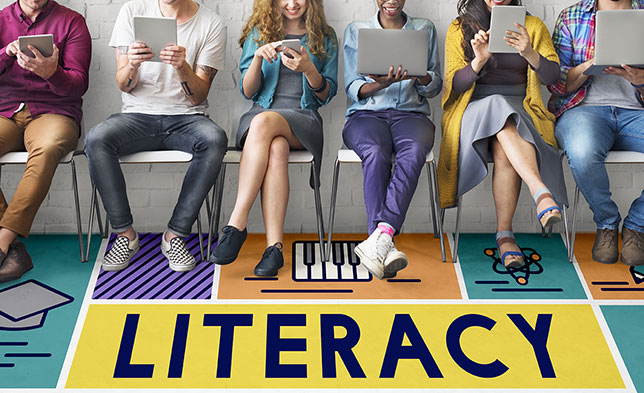Integrating Literacy into STEAM Lessons
Both Common Core and NGSS emphasize the importance of speaking, listening and communicating about mathematical and scientific concepts. Integrating literacy tools into STEAM subjects does more than help students and teachers fulfill objectives. Better literacy helps students identify and more thoroughly understand key concepts.

When I first started teaching middle school science, I noticed that many children approached reading from two extremes.
On one end of the spectrum, some would read through a piece and struggle to achieve any understanding at all. On the other end, students would highlight nearly the entire text and sometimes rewrite it word for word as they took "notes." In both cases, they were unable to identify important points. The struggling readers didn't understand enough to pick out basic ideas, and the heavy-highlighters needed a better filter to separate the important concepts from the rest of the text.
Students' writing often reflected their struggles with reading. The writing samples for these students would be vague, unclear, or demonstrate a lack of understanding.
As I identified these challenges, I realized I wasn't just in the classroom to teach science, but to teach students how to read about it, learn about it, and even pick it apart.
Today, after teaching middle school physics, chemistry and astronomy for 10 years, I'm an instructional coach supporting teachers in both Common Core and Next Generation Science Standards (NGSS). Common Core and NGSS require teachers to integrate literacy into their lessons, and that's a good thing. Students need to know how to communicate about science and math to truly master the concepts.
Connecting Literacy and STEAM
Most teachers agree that better literacy skills lead to better STEAM learning. But putting concrete skill-building tasks into practice can be difficult. Here are some ways that I work with teachers to integrate reading and writing tools into STEAM lessons.
Reading
- Add to your resource list. Build your own library of age-appropriate materials such as online news sites, magazines and journals. Look for resources that demonstrate real-world implications of student lessons. Videos are OK, but interactive resources can easily be found on the internet. My district also uses the K-5 curriculum from TCI's Bring Science Alive!that has engaging, live-classroom activities as well as online simulations. The curriculum will be available for grades 6-8 in fall of 2017.
- Try humor and fiction. Science isn't always dry non-fiction. The Disappearing Spoon by Sam Kean is a fascinating and often funny behind-the-scenes look at the scientists who contributed to the periodic table. The Giants of Science: Isaac Newton by Kathleen Krull is an excellent biography that makes teaching physics more engaging and accessible. Graphic novels are another popular resource, such as The Solid Truth about States of Matter with Max Axiom by Agnieszka Biskup.
- Ask questions first and then read. To help students get a better understanding of key concepts, have them skim an article and form questions based on the titles, subheadings and photos they see. Have them try to answer the questions on their own before they start reading. Bring Science Alive! also has activities and examples of how to conduct a "scavenger hunt" that requires students to identify features and structures that might give clues to what they're going to learn before they start reading.
Writing
- Use graphic organizers. Before students write anything, particularly a lab report, it's helpful to have them use a graphic organizer. Many graphic organizers include elements like sentence frames or sentence starters to help students focus their thoughts into written words. If they've never used a graphic organizer before, demonstrate the entire process of how information in a graphic organizer is eventually turned into a report.
- Advance inquiry skills. Asking great questions is essential for better writing. Bring Science Alive! allows teachers to supply students with multiple questions or writing prompts that learners can choose and own. These online question-and-answer activities often spark more in-depth conversations while allowing students to practice writing meaningfully about STEAM subjects.
- Have students be the teachers. Consider assigning a unit project where teams of students present a lesson for a related topic. Students can design essential questions, create handouts, and co-create a lesson assessment for their peers. Teaching to the class requires them to write and communicate information in a highly digestible way. It also gets students interacting with one another and advancing scientific discussions.
Better Literacy = Better STEAM Learning
Both Common Core and NGSS emphasize the importance of speaking, listening and communicating about mathematical and scientific concepts. Integrating literacy tools into STEAM subjects does more than help students and teachers fulfill objectives. Better literacy helps students identify and more thoroughly understand key concepts. With teachers' help, they can build on these skills to explore on their own, master subjects, and continue to use these skills wherever they go in their educational career and beyond.
About the Author
Ann Lorey is a middle school Common Core and science coach in the Palo Alto Unified School District.